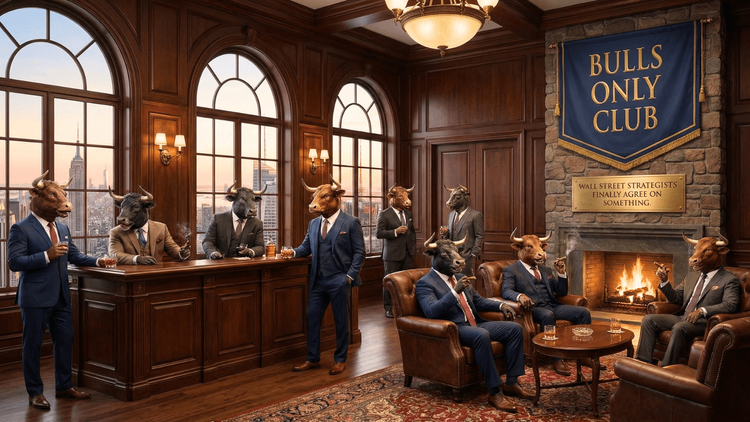Check the Pulse: Dow Flatlines After UNH Crash
How UnitedHealth’s 23% crash exposed the Dow’s outdated formula—and shook 800 points off the index in a single session.

On April 17, 2025, Wall Street watched in real-time as UnitedHealth Group (UNH) sent a seismic shockwave through the markets. With a jaw-dropping 23% plunge in a single session, the health insurance titan didn’t just take a hit—it obliterated the Dow Jones Industrial Average’s (DJIA) trajectory for the day. While headlines screamed about the price crash, what really set the Dow spinning wasn’t just the scale of the drop. It was the math.
Unlike the S&P 500 or the Nasdaq Composite, which are weighted by market capitalization, the Dow operates on an outdated pricing model. It’s price-weighted, meaning the most expensive stock has the most influence—regardless of how big the company actually is. And until Thursday, UnitedHealth held that crown.
How One Stock Dragged the Dow Down by 800 Points
Before the collapse, UnitedHealth’s share price hovered in the $500 range, making it the highest-priced component in the Dow. With the Dow’s divisor sitting at around 0.163, every $1 change in UnitedHealth’s stock equated to roughly a 6.1-point move in the index. So when UNH tumbled over $135 in a single day, it carved out more than 800 points from the Dow by itself. Not a typo—800 points. Just one company.
This is why the Dow, a relic from the late 19th century, struggles to reflect modern market reality. Created in 1896 by Charles Dow to track 12 industrial giants, the index now includes 30 companies, yet still clings to its antiquated math. That wouldn’t be such a problem if stock prices across the index were balanced. But they’re not. UnitedHealth’s collapse proved just how lopsided the index’s methodology has become.
The Dow’s Design Is Its Biggest Weakness
Think of the Dow like a scale that doesn’t weigh actual weight but just the size of the boxes it’s measuring. A feather-light $500 stock gets more influence than a $2.9 trillion behemoth like Apple, simply because its per-share price is higher. On the other hand, Apple’s $195 stock price gives it just 3% weight on the Dow, despite being the biggest company in the U.S. market. That’s not just ironic—it’s misleading.
As former Citi managing director Dave Weisberger bluntly put it, “The Dow is a dinosaur.” It’s a symbol of Wall Street’s past, not a lens for its future. Today’s investors—and certainly the algorithms and institutional players driving most of the volume—look to the S&P 500 as the true barometer. The S&P's broader and more nuanced market-cap weighting offers a much more accurate read of investor sentiment and market health.
Just look at the disparity on Thursday: while the Dow fell 260 points midday, the S&P 500 actually climbed 0.9%, and the Nasdaq edged higher by about 0.5%. That split-screen moment laid bare the Dow’s disconnect.
When Stock Price Doesn’t Equal Market Power
Here’s what most casual investors miss: a company’s stock price is not a reflection of its size. It’s a function of how the company chooses to slice its ownership pie. The formula—market cap divided by shares outstanding—means that two companies with the same total value can have wildly different per-share prices depending on how many shares they’ve issued. UnitedHealth’s $500-plus price tag wasn’t because it was ten times more valuable than Apple—it was just structured differently.
But because the Dow gives outsized influence to companies with higher prices, this quirk becomes a market-moving problem. UnitedHealth, ranked only eighth in terms of total market value among Dow constituents, had the biggest pull on the index. It didn’t matter that Microsoft, Nvidia, and Amazon were larger by market cap. Their lower share prices muted their impact on the Dow’s movement.
The Bigger Picture: UNH and the Market in 2025
The UnitedHealth slide didn’t happen in a vacuum. The broader market in 2025 has been under pressure from a blend of sticky inflation, softening earnings, and tightening margins in defensive sectors like healthcare. While high-growth tech names such as Nvidia and Meta had already been hammered, their weight on the Dow was small due to share price dynamics. Meanwhile, UnitedHealth’s tumble offered a real-time lesson in how price-weighted indices distort market realities.
It also exposed the fragility of the Dow’s concentration risk. With only 30 members, one outlier can swing the entire index. In 2019, it was Boeing. Today, it’s UnitedHealth. And unless the methodology is updated, tomorrow it could be Goldman Sachs, Microsoft, or any other high-priced component.
Dow vs. S&P 500: A Study in Contrasts
Let’s talk about scale. The SPDR S&P 500 ETF (SPY) has over $570 billion in assets under management. The SPDR Dow Jones Industrial Average ETF (DIA)? Just under $37 billion. That gap alone tells you where serious money is parked. Professional investors, hedge funds, pensions—all of them benchmark against the S&P. The Dow is increasingly a headline ticker, not a core market tool.
The market knows it, too. On days when Apple or Nvidia announce blowout earnings, the S&P and Nasdaq swing wildly—while the Dow barely flinches. But when one high-priced Dow component falters, it gets amplified far beyond its true economic importance. Thursday was a textbook example.
Is It Time to Retire the Dow?
There’s a growing chorus on Wall Street that says yes. It’s not that the Dow is broken—it’s just no longer relevant for modern portfolio construction. With ETFs, mutual funds, and retirement accounts all indexed to broader and more diversified benchmarks, the Dow serves more as a symbol of legacy than a tool for the future.
Still, the media loves the Dow. Its long history and big round numbers make for eye-catching headlines. “Dow drops 800 points” sounds a lot scarier than “S&P dips 0.5%.” But for investors trying to understand real market trends, the Dow’s quirks are more confusing than clarifying.
What Happens Next for UnitedHealth?
For UNH, the damage control begins now. While the plunge was steep, it wasn’t without precedent. The company has weathered previous storms, including regulatory overhangs, reimbursement challenges, and policy shifts. But a one-day drop of 23% is a serious blow, especially for institutional investors and ETFs that rely on stability from blue-chip names.
The immediate concern is how much of this move was technical versus fundamental. Was this panic selling on earnings fears? Or a systemic issue with Medicare reimbursements? That’s what analysts and investors will be digging into in the coming days. But one thing’s for sure—when the most expensive stock in the Dow catches a cold, the whole index gets the flu.
Conclusion: This Wasn’t Just a Selloff—It Was a Spotlight
UnitedHealth’s crash didn’t just bruise a single stock. It spotlighted a structural flaw in how one of the world’s most-watched indices is built. The Dow, revered for its history, is struggling to remain relevant in a market increasingly driven by logic, scale, and transparency.
Thursday’s trading session wasn’t just a reminder of volatility—it was a call for evolution. Investors deserve indices that reflect reality, not outdated formulas. The question isn’t just what happens to UNH next. It’s what the Dow becomes in the age of data-driven investing.






